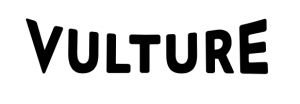A Radical New History of Queer Modernism, 1933–1950 But “The Young and Evil” is reactionary, too.
By
The first gallery of “The Young and Evil” is one of the most reactionary yet radical visions of art on offer anywhere in New York right now. Most viewers won’t be familiar with the names of the artists on display — Paul Cadmus, Jared French, and Pavel Tchelitchew (pronounced Shell-ah-chev) — or with their unapologetically queer paintings made between 1933 and 1950. No matter, the show — it’s lovingly organized by critic Jarrett Earnest and should be expanded into a much larger one at a museum — is an overdue reintroduction to a number of artists whose work is rarely on display, either because it’s deemed in bad taste (often it’s outright kitsch), irrelevant to modernism (it’s not), or too graphically homosexual for public view (maybe it is! Or has been, at least). In equal parts X-rated, salacious, hysterically funny, erotic, violent, fantasy-based, brave, and a wonderful record of secret lives, this first show and much that follows will inspire young artists — especially those looking for confirmation that styles deemed retrograde or conservative may be reignited in revolutionary ways by being deployed in new contexts and with new subject matter. Earnest theorizes, “Another modernism existed, beating at the very heart of New York’s culture in the early-20th century. [The artists and writers in this show] were new social creatures, playfully and boldly homosexual at a time when it was both criminalized and pathologized. They pursued a modernism of the body — driven by eroticism and bounded by intimacy.” George Bellows’s boxer was sinewy; Thomas Hart Benton’s farmers were willowy. The bodies in this show are sensual, on display, sexually presenting, in carnal states of being — all expressing an otherwise forbidden and reviled sexuality. The artists here knew deeply whereof they spoke in this expanded erogenous field of art.


